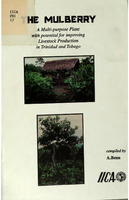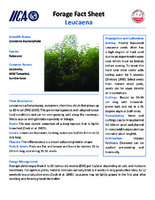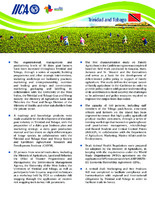The mulberry: a multi-purpose plant with potential for improving livestock production in Trinidad and Tobago
| dc.contributor.author | Instituto Interamericano de Cooperación para la Agricultura (IICA) | es |
| dc.contributor.author | Been, A | es |
| dc.date.accessioned | 2020-11-09T19:44:42Z | |
| dc.date.available | 2020-11-09T19:44:42Z | |
| dc.date.issued | 1999 | |
| dc.identifier.uri | https://repositorio.iica.int/handle/11324/13132 | |
| dc.description | 12 páginas, | es |
| dc.description.abstract | This document explains on the mulberry is a temperature plant that is grown primarily for feeding its leaves to the silkworm. Inspite of its origin, it grows well under a wide range of conditions from sea level to 3000m. The foliage is nutritious, platable and highly digestible making it suitable for feeding of livestock, ruminants, as well as, non ruminants. It is also reported to be of great medicinal value. There are three types of mulberry, named according to the colour of the fruit: red mulberry, black mulberry, white mulberry. | es |
| dc.language.iso | en | es |
| dc.publisher | Instituto Interamericano de Cooperación para la Agricultura (IICA) | es |
| dc.subject | Caribe||Caribbean||Caraíbas||Caraïbes | es |
| dc.subject | Trinidad y Tobago||Trinidad and Tobago||Trinidad e Tobago||Trinité-et-Tobago | es |
| dc.subject | Producción||production||produção||production | es |
| dc.subject | Morus alba | es |
| dc.subject.other | Representación Trinidad y Tobago | es |
| dc.title | The mulberry: a multi-purpose plant with potential for improving livestock production in Trinidad and Tobago | es |
| dc.type | Libro | es |





